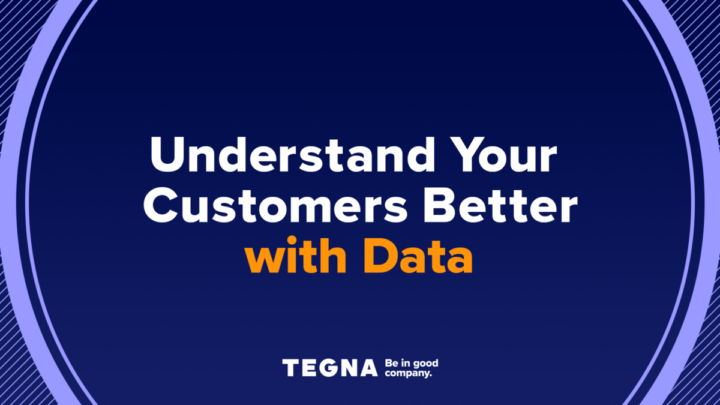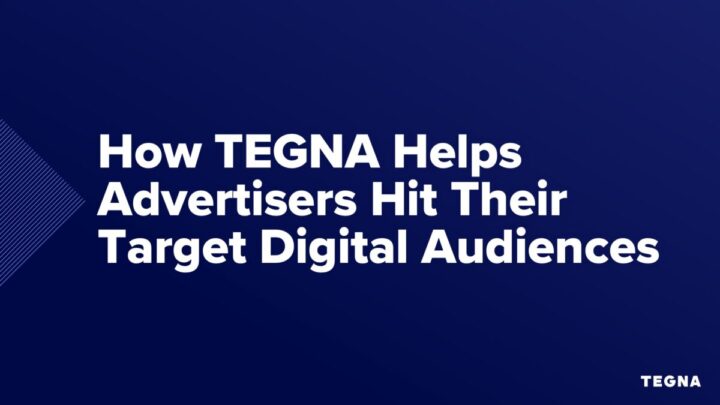Cross-Channel Marketing: The Ultimate Advertising Guide

In today’s ever-evolving advertising world, reaching your audience through more than one channel isn’t a nice to have. It’s a must-have. The power of cross-channel marketing lies in its ability to weave a seamless narrative across various platforms, creating a harmonious symphony of brand communication to the masses.
This comprehensive guide delves into cross-channel marketing, exploring its definition, benefits, challenges, and practical tips for success.
What is Cross-Channel Marketing?
In today’s media landscape, your customers are everywhere. They’re watching live sports on TV, streaming their favorite shows, reading articles online, watching videos, playing games, listening to podcasts, checking email, posting to social media … the list goes on.
Therefore, brands looking to grow their business must deploy a cross-channel marketing strategy, which is a strategy that combines the power of several different channels, such as linear TV, streaming media, and digital elements, to reach the masses.
Sounds easy enough, but careful planning is required to unify these marketing efforts across multiple platforms to deliver a cohesive message to your target audience and provide a compelling customer experience.
Marketing Channels for a Cross-Channel Campaign
The success of a cross-channel campaign relies on selecting the right channel mix that resonates with your target audience. Here are some key channels to consider:
Television
TV remains an essential and effective component in creating a cross-platform marketing campaign for several reasons, despite the increasing prevalence of digital and online platforms. Incorporating TV into a cross-platform strategy can enhance overall campaign effectiveness thanks to its:
- Wide Reach: Television has a massive reach and can quickly introduce your brand or product to a vast and diverse audience. It remains one of the primary mediums to connect with a wide demographic range, including older audiences who might not be as active on digital platforms. Additionally, TV is often consumed while people multitask, presenting an opportunity to capture the attention of viewers who might not be fully engaged with digital platforms at the moment.
- Brand Awareness: TV provides a visually compelling and engaging medium for showcasing your brand or product. The combination of audio and visual elements in TV ads helps create a memorable and emotional connection with viewers, enhancing brand recall and awareness.
- Credibility and Authority: TV ads are often seen as more credible and authoritative due to their production quality and the trust of established TV networks or channels. This can lend credibility to your brand and products, especially when they are showcased alongside other reputable brands, known as the halo effect.
- Emotional Impact: Television can uniquely evoke emotions through storytelling, visuals, and music. This emotional impact can significantly create a memorable connection with the audience and influence their purchasing decisions.
- The Right Audience: Whether you are trying to target viewers locally or nationally, television advertising offers numerous benefits. Consider a broadcast advertising package. Your advertising team can partner with local news stations to either highlight a more regional product or to create more targeted messaging for a national brand.
- Boosting Online Engagement: TV can complement other digital and online marketing efforts. For example, TV ads can encourage viewers to engage with your brand online through hashtags, contests, or interactive experiences like watching a video. This bridges the gap between traditional TV advertising and digital engagement and can drive traffic to your website or social media platforms.
OTT/ Streaming
As streaming platforms gain popularity, over-the-top (OTT) platforms have become essential in creating a cross-platform marketing campaign due to their unique advantages and ability to complement other marketing channels. Here’s why incorporating OTT into your cross-platform strategy is beneficial:
- Audience Segmentation: OTT platforms allow for precise audience segmentation based on demographics, interests, behavior, and more. This level of targeting ensures that your ads reach the right audience, increasing the relevance of your marketing messages.
- Reaching Cord-Cutters and Cord-Nevers: As more people move away from traditional cable TV, OTT provides a way to reach audiences who have cut the cord or never subscribed to cable in the first place. This allows you to engage with younger and more tech-savvy viewers who are more likely to consume content through digital platforms.
- High-Quality Content: OTT platforms are known for hosting high-quality, on-demand content. Associating your brand with premium content can enhance your brand’s image and credibility.
- Complementary to TV Advertising: OTT can work alongside TV advertising to extend the reach of your campaign. You can reinforce your TV ad messaging and drive deeper engagement by targeting specific demographics on OTT platforms and utilizing the interactive features they offer.
- Measurable Results: OTT advertising offers detailed analytics and data-driven insights that can help you understand the impact of your campaigns, as well as valuable insights into viewer behavior, preferences, and trends. You can track metrics such as views, clicks, completion rates, and more, allowing you to optimize your campaign in real-time.
Digital
Digital marketing plays a crucial role in creating a cross-platform marketing campaign due to its versatility, precision targeting, measurability, and the widespread adoption of digital platforms by consumers. Digital advertising encompasses a range of formats, including display ads, contextual advertising, social media, native advertising, and search engine marketing, providing the flexibility to tailor your message to specific demographics. Additionally, digital channels offer:
- Real-Time Analytics: Digital campaigns provide real-time analytics that allows you to track the performance of your ads and content instantly. You can measure metrics like clicks, impressions, engagement rates, conversions, and more, enabling data-driven decision-making.
- Interactivity and Engagement: Digital marketing allows interactive campaigns that engage users through quizzes, polls, contests, and user-generated content. This engagement fosters a stronger connection between your brand and your audience.
- Personalization: Digital platforms facilitate personalized marketing by allowing you to create customized experiences for individual users. Personalization enhances user engagement and increases the chances of conversion.
- Mobile Accessibility: With the increasing use of smartphones and mobile devices, digital marketing ensures that your campaigns are accessible to users on the go. Mobile-responsive websites and mobile-specific ad formats are crucial for reaching mobile users effectively.
Podcasts
The intimacy of podcasts offers a personal connection with listeners, making them a powerful channel for brand storytelling and education. Podcasts uniquely engage audiences, build trust, and provide valuable content in an easily accessible format. Integrating podcasts into your marketing strategy offers several benefits:
- Niche Targeting: Podcasts cater to specific interests and niches. This allows you to target a highly relevant audience and deliver tailored content that resonates with their needs.
- Establishing Authority and Thought Leadership: Podcasts provide a platform to showcase your expertise and thought leadership in your industry. Hosting informative discussions and interviews or providing insights on relevant topics can position your brand as a trusted source of information.
- Multichannel Distribution: Podcasts can be distributed across various platforms, including podcast directories, streaming services, websites, and social media. This multichannel distribution enhances your reach and cross-platform presence.
Out-of-Home
Billboards, transit ads, and other out-of-home (OOH) media ensure your brand message reaches consumers through their daily routines. Incorporating OOH advertising into a cross-platform marketing campaign bridges the gap between physical and digital realms, offering a tangible touchpoint that complements online engagement. By combining the strengths of various platforms, brands can create a more holistic and memorable campaign that resonates with their target audience thanks, in part, to its:
- Broad Reach: OOH advertising can reach a wide and diverse audience, including those who might not be active on digital platforms. By targeting high-traffic areas, you can expose your brand to many people.
- Constant Exposure: OOH ads are visible 24/7, providing continuous exposure to your message. This repetition can reinforce brand awareness and aid message retention.
- Geographic Targeting: OOH ads can be strategically placed in specific locations to target local audiences effectively. This is particularly valuable for businesses with physical locations or regional campaigns.
Incorporating email marketing into a cross-platform campaign enables you to connect with your audience on a more personal level, guide them through the customer journey, and drive engagement and conversions across various touchpoints. Its direct nature, customization options, and measurability make it a valuable tool for a holistic and effective marketing strategy. Additionally, email provides:
- Personalized Communication: A level of personalization based on customer preferences, behaviors, and demographics enhances the relevance of your messaging, improving the overall customer experience.
- Customer Journey Integration: Email can be strategically timed to align with different customer journey stages, from awareness to conversion and retention. This integration ensures consistent messaging and enhances the effectiveness of your campaign.
- Direct Channel: Email provides a direct line of communication to your audience’s inbox, allowing you to deliver important messages, updates, offers, and content directly to interested recipients.
What Are The Benefits Of Cross-Channel Marketing?
Cross-channel marketing offers a range of benefits that can lead to improved customer engagement, conversions, loyalty, and overall business success. Integrating various platforms and channels allows you to create a unified customer experience that resonates with your audience and drives meaningful results, as well as the ability to offer:
- Consistent Brand Messaging to ensure your brand’s voice and message remains consistent across all touchpoints, reinforcing brand identity.
- A Complete Customer Journey that guides customers seamlessly from awareness to conversion.
- Maximized ROI by strategically distributing your budget across multiple channels increases the likelihood of reaching your target audience and generating higher returns on investment.
- A Target Audience on their Preferred Channel increases the chances of engagement by catering to their preferred platforms.
- Multiple Touchpoints in a Target Campaign increases brand visibility and engagement opportunities.
What Are The Challenges of Cross-Channel Marketing?
While cross-channel marketing offers numerous benefits, it has its fair share of challenges. Successfully navigating these challenges is crucial for creating a cohesive and effective marketing strategy. Here are some common challenges of cross-channel marketing:
- Importance of Timing: Coordinating timing across channels can be challenging, but it’s crucial for delivering a consistent message and maximizing impact.
- Media Channel Selection: Choosing the right mix of channels requires a deep understanding of your audience’s preferences and behaviors.
- Marketing Attribution: Determining which channels contribute most to conversions can be complex; however, TEGNA Attribution tools simplify this process, offering valuable insights.
How Does Cross-Channel Marketing Work With Retargeting?
Retargeting, a technique that displays ads to users who have previously interacted with your brand, aligns seamlessly with cross-channel marketing. Retargeting across various platforms reinforces your message and encourages users to re-engage, leading to improved conversion rates and brand recall.
6 Quick Tips For a Successful Cross-Channel Marketing Campaign
Here are five quick tips to ensure the success of your cross-channel marketing campaign:
- Create Customer Personas: Develop detailed customer personas to tailor your message to different audience segments.
- Define Important Metrics: Set clear key performance indicators (KPIs) for each channel to measure the effectiveness of your campaign.
- Select Strategic Marketing Channels: Choose channels that resonate with your target audience and align with your campaign goals.
- Optimize Your Messaging: Craft messages that fit each channel’s unique characteristics while maintaining consistent brand messaging.
- Create Consistent Messaging Across Channels: Maintain a cohesive brand narrative across all channels to reinforce your brand’s identity and message.
- Leverage Local Media: Local media campaigns can also work together to reinforce a brand’s message across channels. By combining local TV, local digital strategies, billboards, and subway ads, your brand can reach markets on a more personal level.
Build a Cross-Channel Marketing Plan with TEGNA
In the dynamic landscape of modern advertising, cross-channel marketing has emerged as a paramount strategy for connecting with today’s diverse and digitally savvy audience. By weaving together a tapestry of channels – such as Linear TV, OTT Streaming, and Digital solutions that TEGNA offers, brands can create a resonant, memorable, and compelling brand presence that transcends individual platforms. As you embark on your cross-channel journey, remember that TEGNA stands ready to empower your advertising success. Let’s get in touch.
Frequently Asked Questions
What is the difference between cross-channel & omnichannel marketing?
While cross-channel marketing focuses on delivering a consistent message across platforms, an omnichannel marketing strategy takes it further by seamlessly integrating these channels to create a unified, continuous customer experience.
Will cross-channel marketing help my business grow?
Absolutely. Cross-channel marketing reaches customers where they are, increases brand visibility, and guides customers through the journey, ultimately driving growth and conversions.
Why does cross-channel marketing matter?
Modern consumers engage with brands across various platforms. Cross-channel marketing ensures your message is consistently and effectively delivered, increasing engagement and conversions.
What is the difference between cross-channel marketing & multichannel marketing?
Cross-channel marketing emphasizes consistent messaging across platforms, while multichannel marketing simply involves using multiple channels to reach an audience without maintaining a unified message.




















